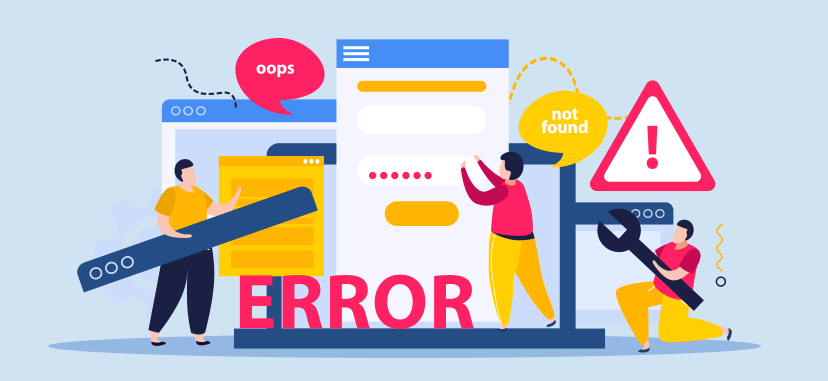
Click the button to start reading
Incident Management 101: The Lowdown on Navigating Project Bumps
Imagine you’re working on a large software development project, and one of the developers reports a critical bug in the code. This incident must be dealt with immediately, as it could significantly affect the project timeline and budget.
So, what do you do? This is where the incident management process comes in. In project management, an incident is any event that disrupts the normal flow of work or causes problems for the project team. The goal of incident management is to lessen the impact of these events and get the project back on track as quickly as possible.
But how do you go about managing incidents in your projects? The incident management process typically follows a set of steps designed to identify, classify, and resolve incidents efficiently and effectively. We’ll be discussing these steps in more detail later in this post, but for now, let’s look at some of the key benefits of having a solid incident management process in place.

Incident Management Process Overview
So, what does the incident management process look like? It typically consists of several vital steps designed to identify, classify, and resolve incidents promptly Categoriesand effectively.
Here’s an overview of these steps:
- Incident Detection and Notification: The first thing you need to do when an incident occurs is to detect using YOLO object detection algorithm and report it. Incidents can be spotted in various ways, such as through monitoring systems, error logs, user reports, or the project team’s observations. It’s essential to have a straightforward process for reporting incidents, so you can get them dealt with as quickly as possible.
- Incident Classification and Prioritization: Once you’ve reported an incident, the next step is to classify and prioritize it based on its impact and urgency. This will help you determine the appropriate allocation of resources and attention devoted to resolving the incident. Factors that influence the classification and prioritization of incidents include the severity of the impact, the number of users affected, and the potential consequences of the incident.
- Incident Resolution and Recovery: After you’ve classified and prioritized an incident, the next step is to resolve and recover from it. This typically involves identifying the root cause of the incident, implementing a fix or workaround, and testing to ensure that the issue has been resolved. Sometimes, it may also involve rolling back changes or restoring systems to a previous state. The incident management team should work closely with the project team and other stakeholders to ensure that the resolution and recovery process goes smoothly.
- Incident Documentation and Communication: It’s essential to document and communicate incidents effectively to ensure they are correctly recorded and understood by all relevant parties. This might involve creating incident reports, updating change logs, or communicating with stakeholders about the status of the incident. Effective communication is crucial to keep the project team informed and focused on the tasks at hand.

STEP 1: Incident Detection and Notification
The first step in the incident management process is detecting and reporting incidents. But how do you go about seeing incidents in a project? Here are a few ways to spot incidents:
- Monitoring Systems: Many organizations have systems in place to monitor the performance and health of their systems, applications, and processes. These systems can detect incidents automatically and trigger alerts when something goes wrong. For example, a monitoring system might see a server outage, a software bug, or a network problem.
- Error Logs: Another way to detect incidents is by reviewing error logs or event logs. These logs record events on a system or application, including errors, warnings, and other issues. By examining these logs regularly, you can identify incidents that might otherwise go undetected.
- User Reports: Sometimes, incidents are detected by users who experience problems or issues while using a system or application. It’s important to have a transparent process for users to report incidents so they can be dealt with promptly. This might involve using a ticketing system, email, or a dedicated incident reporting form.
- Observations: Finally, incidents can be detected through the observations of the project team or other stakeholders. This might involve noticing strange behavior on a system, hearing about user problems, or simply noticing that something isn’t working as it should.
Once an incident has been detected, you or your team need to notify the appropriate parties as quickly as possible. This might involve sending an alert to the incident management team, emailing the project team, or updating a status board. By having a straightforward process in place for incident notification, you can ensure that incidents are dealt with promptly and efficiently.

STEP 2: Incident Classification and Prioritization
Once you’ve detected and reported an incident, the next step is to classify and prioritize it based on its impact and urgency. This is an essential step in the incident management process. It helps you determine the appropriate resources and attention devoted to resolving the incident.
To classify an incident, you’ll need to consider the severity of the impact and the number of users affected. For example, an incident that involves a critical system or service might be classified as high severity. In contrast, an incident that affects a less critical system or service might be classified as low severity.
Consider other factors, such as the potential consequences of the incident or the complexity of the problem.
Once you’ve classified an incident, the next step is to prioritize it based on its impact and urgency. This might involve assigning a priority level to the incident, such as high, medium, or low.
Factors that influence the prioritization of an incident include the severity of the impact, the number of users affected, and the potential consequences of the incident.
There are a few tools and techniques that you can use to help classify and prioritize incidents. One standard tool is the incident priority matrix. This grid enables you to assign a priority level to an incident based on its impact and urgency. Other tools and techniques might include risk assessments, impact analyses, or decision trees.
By classifying and prioritizing incidents effectively, you can ensure that the incident management team can focus on the most pressing issues first and allocate resources appropriately. This can help you resolve incidents more efficiently and minimize the impact on your project.

STEP 3: Incident Resolution and Recovery
Once you’ve classified and prioritized an incident, the next step is to resolve and recover from it. This is an integral part of the incident management process, as it helps you minimize the impact of the incident and get your project back on track as quickly as possible.
You’ll typically need to follow steps that involve identifying the incident’s root cause, implementing a fix or workaround, and testing to ensure that the issue has been resolved. Here are some key considerations to keep in mind when resolving and recovering from incidents:
- Identifying the Root Cause: One of the first things you’ll need to do when resolving an incident is to identify the root cause. This might involve gathering and analyzing data, running diagnostics, or consulting with experts. By identifying the root cause, you can determine the best course of action for resolving the incident.
- Implementing a Fix or Workaround: Once you’ve identified the incident’s root cause, the next step is to implement a fix or workaround. This might involve making changes to the system or application, rolling back changes, or implementing a temporary fix until a permanent solution can be implemented. It’s important to test the fix or workaround to ensure it resolves the incident effectively.
- Testing and Verification: After implementing a fix or workaround, it’s essential to test and verify that the incident has been resolved. This might involve running diagnostics, conducting user acceptance testing, or monitoring the system or application to ensure it functions properly.
- Recovery: In some cases, it may be necessary to recover from an incident by rolling back changes or restoring systems to a previous state. This might involve reverting to a prior system or application version, restoring data from backups, or implementing other recovery measures.
The incident management team should work closely with the project team and other stakeholders to ensure that the resolution and recovery process is seamless and efficient.

Step 4: Incident Documentation and Communication
So, what does adequate incident documentation and communication look like? Here are a few things to consider:
- Documenting Incidents: It’s important to document incidents thoroughly to ensure they are correctly recorded and understood. This might involve creating incident reports, updating change logs, or maintaining a database of incidents. By having a clear and comprehensive record of incidents, you can better understand patterns, identify trends, and identify areas for improvement.
- Communicating with Stakeholders: Effective communication is also vital regarding incident management. This might involve sharing with the project team, updating stakeholders on the status of the incident, or providing users with information about how to access workaround solutions. By keeping stakeholders informed, you can ensure that the project team can stay focused and productive.
- Maintaining a Status Board: A status board can be a helpful tool for communicating the status of incidents to the project team and other stakeholders. A status board might include information about the incidents’ status, each incident’s priority level, and the actions being taken to resolve them. By keeping the status board up to date, you can provide a clear and transparent view of the incident management process.
Documenting and communicating incidents effectively ensures that the incident management process runs smoothly and efficiently. This can help you resolve incidents more quickly and minimize the impact on your project.

Best Practices for Incident Management
Now that you have a good understanding of the incident management process, let’s look at some best practices that can help you manage incidents more effectively in your projects.
- Establish Clear Processes and Procedures: One of the critical things you can do to improve your incident management process is to establish transparent processes and procedures. This might involve defining roles and responsibilities, setting up monitoring systems, and creating incident reporting and notification protocols. By having clear and well-defined processes in place, you can ensure that incidents are dealt with promptly and efficiently.
- Foster a Culture of Continuous Improvement: Another best practice for incident management is fostering continuous improvement. This might involve regularly reviewing and analyzing incidents to identify patterns and trends, implementing corrective actions to prevent similar incidents, and identifying opportunities for process improvement. You can minimize the impact of incidents on your project by continuously improving your incident management process.
- Build a Strong Incident Management Team: A robust incident management team is essential to an effective incident management process. This team should be knowledgeable, skilled, and responsive. It should work effectively with the project team and other stakeholders. It’s crucial to provide the incident management team with the resources and support they need to do their job effectively.
- Invest in Monitoring and Alerting Systems: Monitoring and alerting systems can be valuable for detecting and reporting incidents on time. By investing in these systems, you can ensure that incidents are dealt with promptly and efficiently.
By following these best practices, you can improve your incident management process and minimize the impact of incidents on your project.
Conclusion
Think of incident management as the steering wheel of your project. Just as a steering wheel helps you stay in control and navigate your vehicle safely, effective incident management enables you to control your project and navigate it toward success.
So, how do you ensure that your incident management process is as effective as possible? By building a solid incident management team, establishing transparent processes and procedures, fostering a culture of continuous improvement, and investing in monitoring and alerting systems. By following these principles, you can effectively steer your project toward success.
This blog post has given you a better understanding of the incident management process and how it can help you achieve project success. If you have any questions or need further assistance, don’t hesitate to reach out.
















